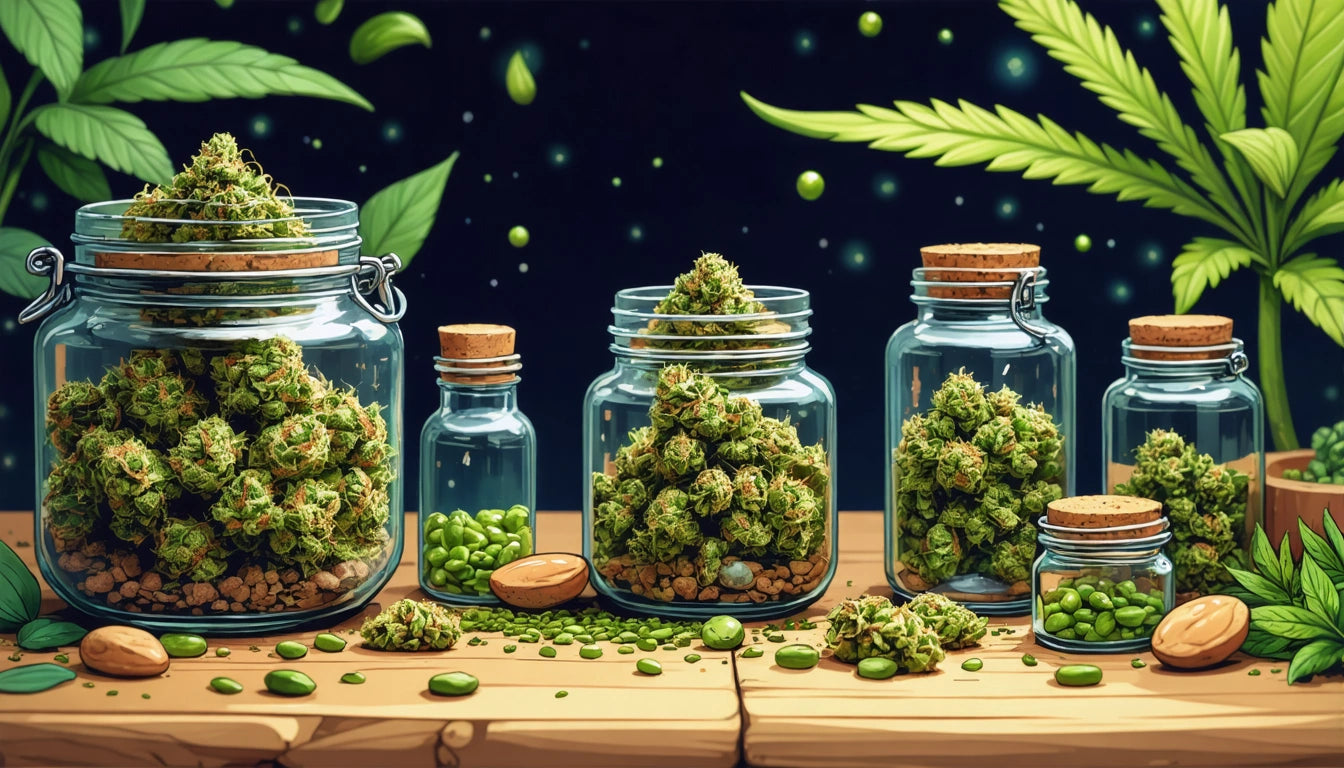Table of Contents
- Balancing Shelf Appeal with Discretion in Edible Packaging Design
- Regulatory Requirements for Edible Packaging
- Design Elements That Balance Appeal and Discretion
- Material Considerations for Effective Edible Packaging
- Operational Efficiency in Packaging Production
- Strategic Packaging Insights for Competitive Advantage
Balancing Shelf Appeal with Discretion in Edible Packaging Design
Cannabis edible packaging faces a unique challenge in today's market: creating designs that capture consumer attention while maintaining appropriate discretion and regulatory compliance. This balance is crucial for brands seeking to establish themselves in competitive dispensary environments without compromising legal requirements or consumer safety.
Regulatory Requirements for Edible Packaging
Compliance serves as the foundation for all cannabis edible packaging decisions. Regulations typically mandate several key features:
- Child-resistant mechanisms that meet CPSC standards
- Opaque materials that prevent product visibility
- Clear dosage information and warning labels
- THC symbols and cautionary language
According to labeling requirements for cannabis edibles, packaging must clearly communicate dosage, ingredients, and potential allergens. This transparency is non-negotiable, but doesn't preclude creative design solutions.
The requirement for opacity is particularly significant, as detailed in this guide on opaque packaging. Opaque materials prevent children from seeing appealing candy-like products inside, addressing a key safety concern while also protecting products from light degradation.
Design Elements That Balance Appeal and Discretion
Color Psychology and Brand Identity
Strategic color choices can communicate product effects and brand positioning without being overtly cannabis-focused. For example:
- Purple and deep blues suggest relaxation and nighttime use
- Bright yellows and oranges indicate energizing effects
- Earth tones convey natural, wellness-oriented products
When designing for multiple markets, brands must consider how packaging differs between medical and recreational contexts. Medical packaging often emphasizes clinical information and dosage precision, while recreational products may incorporate more lifestyle-oriented design elements.
Typography and Information Hierarchy
Clear information hierarchy helps consumers quickly understand product details while maintaining aesthetic appeal. Essential information (dosage, THC content) should be immediately visible, with supporting details available but not dominating the design.
Material Considerations for Effective Edible Packaging
Material selection impacts both shelf appeal and product protection. Top packaging options for edibles include mylar bags, rigid containers, and specialized solutions for temperature-sensitive products.
For brands concerned with environmental impact, sustainable packaging options include compostable films, recycled plastics, and plant-based materials. These eco-friendly choices can enhance brand perception while addressing growing consumer demand for responsible packaging.
The decision between flexible pouches and rigid containers involves weighing various factors. This comparison of pouches versus containers explores how each option affects shelf presence, protection, and consumer experience.
Operational Efficiency in Packaging Production
Efficient packaging operations require appropriate equipment and processes. For high-volume production, automated filling systems can significantly improve throughput while maintaining consistent product amounts and reducing labor costs. These systems are particularly valuable for liquid products and precisely dosed edibles.
Packaging that extends shelf life is another operational consideration. Barrier materials and modified atmosphere packaging can protect edibles from oxygen, moisture, and light degradation, extending product viability and reducing waste.
For products requiring refrigeration or freezing, cold-chain compatible materials maintain structural integrity and seal performance across temperature ranges. This consideration is particularly important for chocolates, certain beverages, and fresh ingredients.
Strategic Packaging Insights for Competitive Advantage
Understanding how packaging influences purchasing decisions provides a competitive edge. Research on consumer behavior in dispensaries shows that packaging design significantly impacts first-time purchases when consumers have limited product experience.
Creating retail-ready packaging that stands out requires balancing attention-grabbing design with compliance considerations. Techniques such as spot varnishes, embossing, and strategic use of white space can create distinction without crossing regulatory boundaries.
For brands operating across multiple states, navigating varied regulatory requirements requires flexible design systems that can accommodate different warning symbols, language requirements, and child-resistance standards while maintaining brand consistency.
The future of edible packaging points toward increased personalization, sustainability, and functional innovation. As markets mature, brands that successfully balance shelf appeal with appropriate discretion will build consumer trust while avoiding regulatory pitfalls that could threaten business continuity.











Leave a comment
All comments are moderated before being published.
This site is protected by hCaptcha and the hCaptcha Privacy Policy and Terms of Service apply.